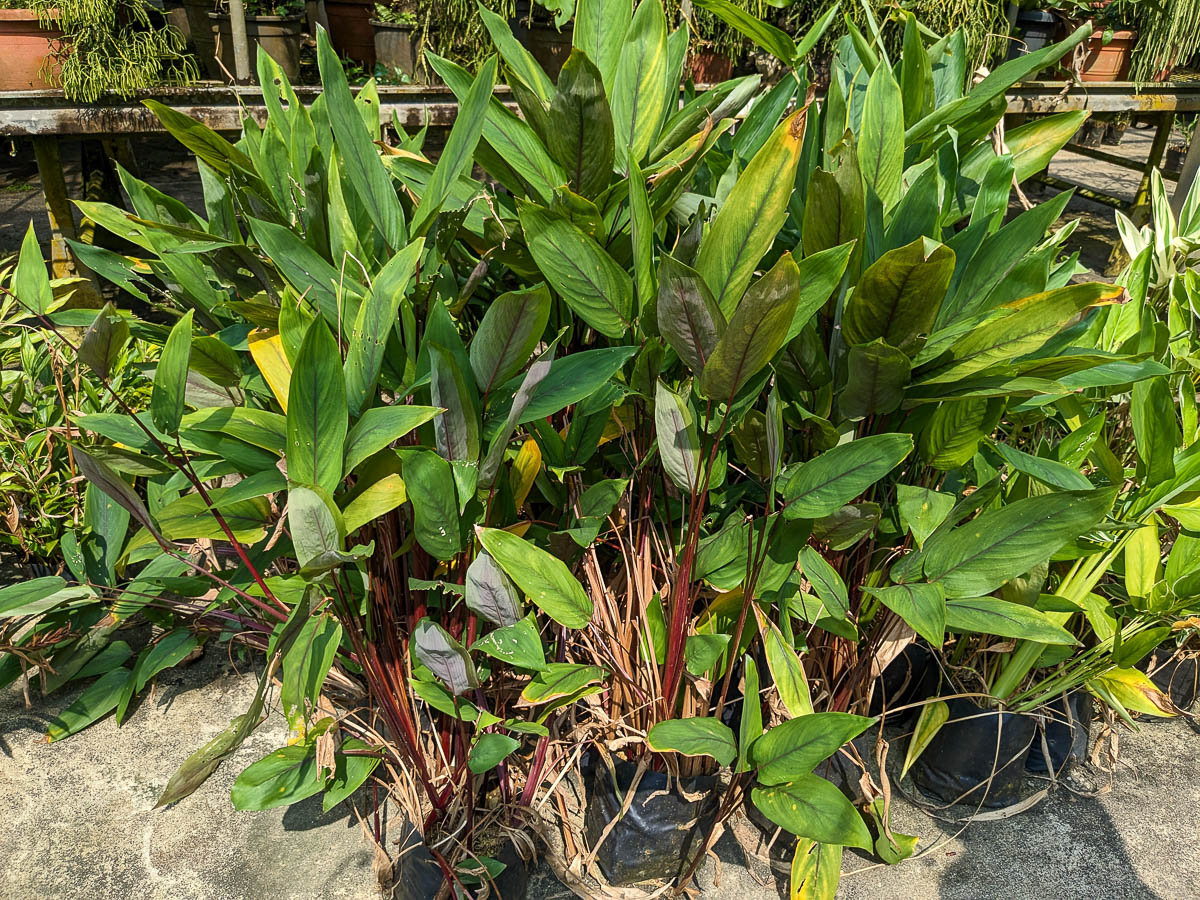Arrowroot
Arrowroot (Maranta arundinacea)
Other common names: West Indian Arrowroot, 竹芋

Arrowroot is primarily grown for its rhizome, an underground horizontal stem that resembles a tuberous root. The rhizome can be eaten fried or steamed, or processed into flour.
A medium perennial crop, it readily grows in the tropics in both true ground and in pots. This is an uncommon plant in edible gardens.
Sun and soil needs:
Arrowroot grows well in 4-6 hours of direct sunlight or 6-8 hours of indirect sunlight.
Plants do best in pots with loamy soil at least 15cm deep, or in true ground. These plants are vulnerable to root rot, so ensure that your pots drain well, and that your soil has plenty of organic matter to let the roots breathe.
This plant will not do well in hot, exposed places like on rooftop gardens, and will be prone to sunburn.
Growing:
This plant naturally grows in clusters as the plant grows more rhizomes. Thin plants out to give them around 5-10cm of space to encourage the production of more rhizomes.
Harvesting:
_victorialim.jpg)
Plants can be harvested for rhizomes at any time. They are typically harvested continuously via division.
Propagation:
_victorialim.jpg)
Arrowroot is propagated via division of the rhizome.
Common problems & solutions:
This plant is relatively resistant to pests and disease if kept healthy.
This plant’s leaves may develop sunburn if exposed to too much sunlight. Prevent this by planting it in shade or cover it with shade netting.
Aphids, Mealy Bugs, and Spider Mites often infest the plant if it has underlying problems like repeated wilting from heat stress. Mechanical pest control methods like pruning the infested parts are the best methods for managing these pests in the short term, but resolving the underlying problem will prevent them in the long term.
Wilting leaves during hot weather is a sign of heat stress. Increase the number of times the plant is watered daily or move it to a shadier part of the garden.

